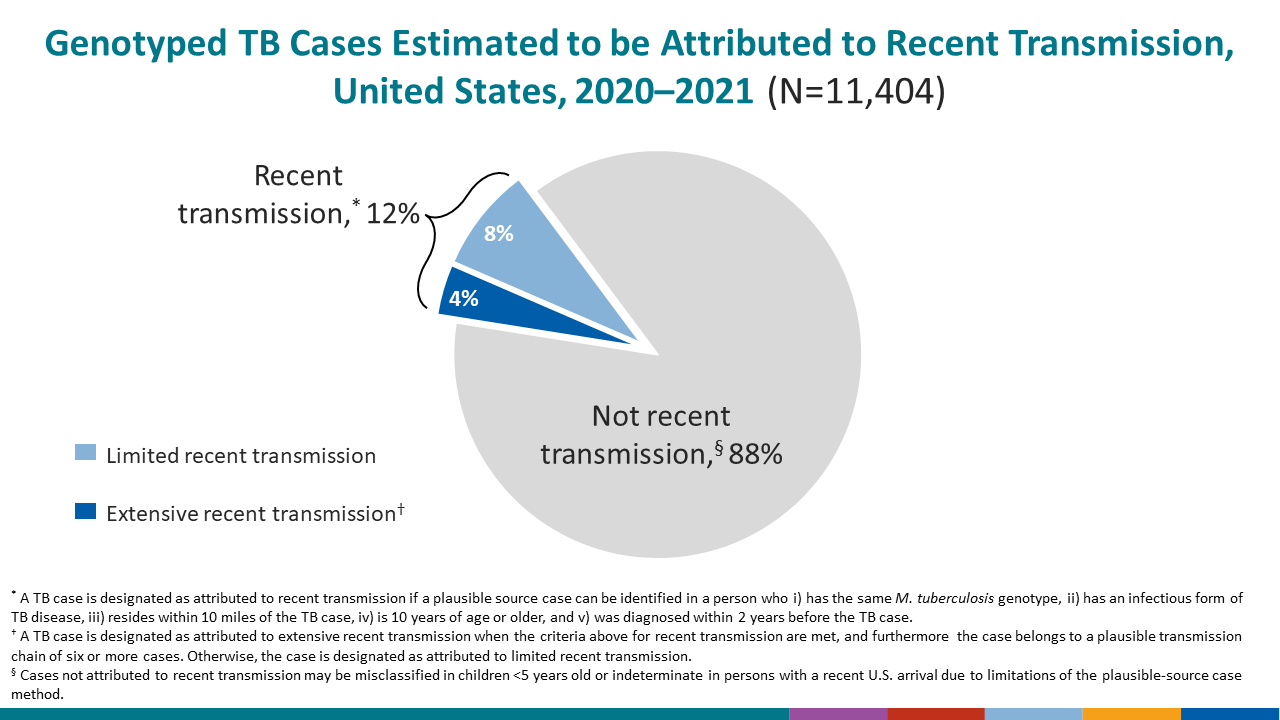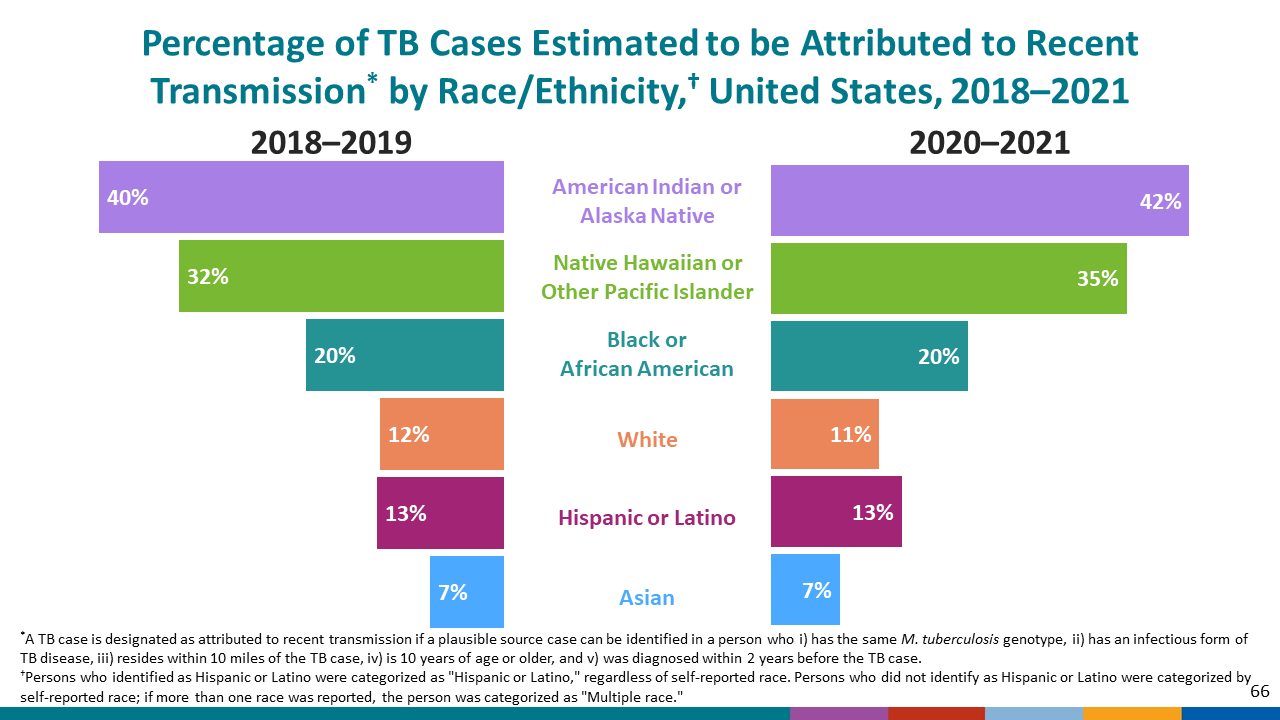Reported Tuberculosis in the United States, 2021
Estimates of Recent Transmission

Control of recent transmission is an essential component of the national strategy to eliminate TB disease in the United States. CDC uses data from conventional genotyping to estimate the number of TB cases that are attributed to recent transmission. Estimates are based on whether a TB case has a plausible source case with a matching genotype in a person who resides within 10 miles and was diagnosed with TB within 2 years prior to the case. Cases that are attributed to recent transmission are further assessed for whether they belong to a plausible chain of transmission of 6 or more cases within a 3-year period. If so, the case is additionally considered to be attributed to extensive recent transmission.
State and local TB programs may use these estimates to monitor trends in their jurisdictions and to assist in planning and prioritizing TB control activities.
The number of cases attributed to recent transmission declined from 1,703 before the COVID-19 pandemic (2018–2019) to 1,400 during 2020–2021.
- The 12.3% of genotyped cases attributed to recent transmission during 2020–2021 is comparable to the previous 2-year period 2018–2019 (12.5%).
- While estimates of recent transmission vary across the 52 U.S. reporting areas, all but seven reporting areas had at least one case reported in 2020–2021 that was attributed to recent transmission (Estimated Recent and Extensive Recent TB Transmission: Reporting Areas, 2020–2021).
Although 71.4% of reported TB cases were among non-U.S.–born persons during 2020–2021 (TB by Origin of Birth: 1993–2021), 53.6% of cases attributed to recent transmission and 59.0% of cases attributed to extensive recent transmission were among U.S.-born persons (Characteristics of TB Cases Estimated to be Attributed to Recent Transmission: 2020–2021).
The percentages of cases in some populations at increased risk for TB that were attributed to recent transmission and extensive recent transmission have increased during 2020–2021 compared with 2018–2019.
- Among persons with TB disease who reported injecting drug use during 2020–2021, 29.9% and 12.6% were attributed to recent transmission and extensive recent transmission, respectively; in the previous 2-year period the percentages were 27.1% and 9.4%.
- Among persons residing in a correctional facility at the time of TB diagnosis during 2020–2021, 26.7% and 18.0% of cases were attributed to recent transmission and extensive recent transmission, respectively, compared with 18.1% and 10.4% in the previous 2-year period.
- Recent and extensive recent transmission estimates for persons experiencing homelessness in the year prior to TB diagnosis were higher than the overall national estimates during 2020–2021 (27.1% and 13.0%, respectively) (Characteristics of TB Cases Estimated to be Attributed to Recent Transmission: 2020–2021).
See the Risk Factors webpage for more information.
Disparities in the estimated percentage of cases attributed to recent transmission and extensive recent transmission persist among certain racial and ethnic minority groups.
The percentage of recent and extensive recent transmission in 2020–2021 was highest among non-Hispanic American Indian or Alaska Native persons (41.6% and 18.4%, respectively) (Characteristics of TB Cases Estimated to be Attributed to Recent Transmission: 2020–2021).
See the Demographics webpage for more information.
Learn more in the Estimates of Recent Transmission Narrative and Executive Commentary.
- Figure 1. Estimated Cases Attributed to Recent Transmission of TB, United States, 2020–2021
- Figure 2. Estimated Percentage of Extensive Recent Transmission of TB, United States, 2020–2021
- Estimated Recent and Extensive Recent TB Transmission: Reporting Areas, 2020–2021
- Estimated Recent and Extensive Recent TB Transmission: Counties with >5% Extensive Recent Transmission, 2020–2021
- Characteristics of TB Cases Estimated to be Attributed to Recent Transmission: 2020–2021

